#sanaga
Text

Dessins de presse .... spécial justice ! 😁🤣

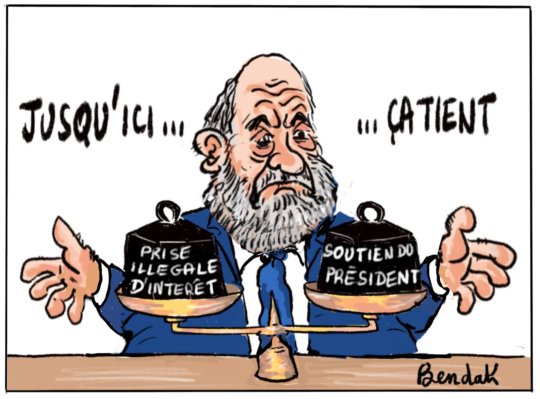


Dessins de presse de Piérick, Couty, Chaunu, Placide, Bendak, Goubelle, Sanaga, Plantu.



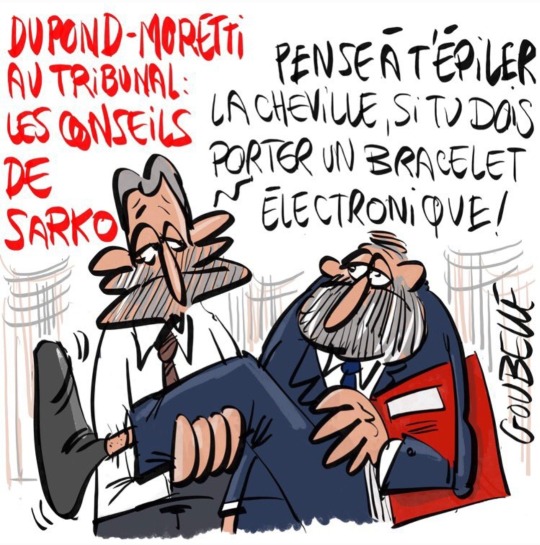
Bel après-midi 👋

#artwork#dessin de presse#art et talent#actualité#justice#eric dupond moretti#humour#funny pics#chaunu#piérick#plantu#goubelle#couty#bendak#sanaga#placide#belaprèsmidi#fidjie fidjie
31 notes
·
View notes
Photo


Avec Metodkilla et Dj J Hart nous sommes fiers de recevoir pour
notre Independenza 29 DJ Ness Afro. Côté Metodkilla il y aura
du 2mezur, Soleil Noir, Lelbi…. Et pour J Hart ce sera toutes les
pépites du rap new-yorkais. Animée par Anne-Sophie Mattéi
Feat. SANAGA by Franck Biyong & MASSAK with Sandra Nkake
from the VISIONS OF KAMERUN LP (Check it out...)

#radio campus#Paris#Anne Sophie Mattei#dj ness afro#playlist#radio show#sandra nkake#Franck Biyong#franckbiyong#sanaga#cameroon#visions of kamerun
1 note
·
View note
Text
the Bantu dialect. the Bantu dialect. the Bantu dialect, singular. the singular Bantu dialect* invariably spoken by all of the Africans enslaved and brought to Louisiana.
I can't adequately explain, briefly, just how fucking bonkers of a phrase that is. just how completely outlandish. the Bantu dialect...
Bantu is a family of languages. actually it's like, a family of language groups. it is a huge, high-level division of language clades. the sub-divisions of the Bantu family can be further subdivided into nodes that are subdivided into languages (and then those languages are sub-divided into dialects).
even just following wikipedia's version of the taxonomy (all of this is constantly subject to argument and revision): the Mbam languages are a group of Bantu languages. the "Mbam" umbrella divides into the Sanaga, West Mbam, and Yambasa language groups. the Sanaga node can be further divided into the Tuki, Leti, and Mbwasa languages. dialects of Tuki include Kombe, Cenga, Tsinga, Bundum, Njo, Ngoro, and Mbere. one randomly chosen node of one node of one node of the Bantu language group has seven dialects (eight, if you count Mbwasa, which some linguists do).
linguists who study any subgroup of African languages frequently complain about ignorance surrounding them, the prototypical example being people who think that every African language is perforce a Bantu one. this man is not even knowledgeable enough to be at that level of ignorance. he published this. he wrote an easily verifiable claim about the accepted etymology of a word and didn't even bother checking, and then he published that in a book.
about 5% of the world's population speaks one of these 400-600ish languages. in terms of number of recognised, living languages, this statement is sort of like if I called Indo-European a "dialect." thus basically all of Europe except for Finland, everyone in the north of India, and the entire Iranian plateau speak "the Indo-European dialect." completely insane. off-the-wall bonkers amounts of racism at work here.
*If Bantu is a "dialect," by the way, one wonders which broader language it is a dialect of? Really, though, we needn't ask—here "dialect" simply means "something spoken by African or Indigenous people and therefore not worthy of the exalted word 'language'"
#by the way the density and diversity of languages here is not special to Africa#Europe was like this too until linguistic diversity was systematically quashed#gumbo research saga
76 notes
·
View notes
Text

"Meh, you are less scary than the end of 2023"
Sanaga
8 notes
·
View notes
Text
On Haiti's day of ancestral remembrance, one of my siblings shared this letter with us. It is a monumental letter; it has not been often that Africa has collectively spoken to and about Haiti. It's a sad and beautiful love letter, and speaks some really deep truths. They are right; Haiti is dying right now and it is past time that the international community take responsibility for what hundreds of years of international interference has wrought. I hope this is the impetus for action because the reality of Haiti right now is worse than can accurately be described.
Below is an English translation of the above linked article.
EMBARGO: January 1 , 2023
And especially my body as well as my soul,
be careful not to cross your arms
in the sterile attitude of the spectator,
because life is not a spectacle,
because a sea of pains is not a proscenium,
because a a screaming man is not a dancing bear.
Aimé Césaire, Excerpt from Notebook of a Return to the Native Land (1939).
Captured in the valleys once trodden by Afarensis, or from Zanzibar, Madagascar, Gorée, El Mina, Bimbia, Benguela, Luanda, Cabinda, savannahs and forests, Ségou, Benin, Sokoto, the banks of the Congo or Oubangui, or along other great rivers, Ogooué, Casamance, Niger, Sanaga, having left the cosmogony that still binds them today to the mother of all continents, enslaved Africans arrived centuries ago in the Americas . In the worst forced migration of all time, the transatlantic slave trade took some of these men, women and children to Kiskeya, also known as Hispaniola, the island now shared by Haiti and the Republic Dominican Republic in the Caribbean Sea.
A land immersed in African traditions, Haiti, the "Pearl of the Antilles" or "Mountain Country" in the Taino language, is the nation where black slaves have shown the greatest resilience.
On August 14, 1791 in the forest of Bois Caïman, the voodoo priest Dutty Boukman organized a ceremony with the support of the priestess Cécile Fatiman, a "mambo" who performed sacrifices. On that memorable stormy night, the enslaved participants solemnly swore that servitude would be doomed, taking an oath to fight or die. They will later obey the orders of Toussaint Louverture in the revolt orchestrated by the remarkable leader. His epic – rare, if not unique – victory over one of the worst crimes ever committed against humanity continues to be recounted by many. Toussaint, a Caribbean island strategist and visionary, defeated the stubborn Napoleon, an island native from Corsica. This historic victory has been sung by great poets like Aimé Césaire.
On January 1, 2023, the first black republic celebrates the 219th anniversary of its glorious independence. However, the Pearl of the Antilles is dying.
Haiti was forced to pay a ransom to France as compensation to French slave owners for lost property, or else slavery would be reimposed and Haiti invaded. In May 2022, The New York Times published a well-researched series of articles titled “The Ransom: Haiti Lost Billions” [ The Ransom: Haiti Lost Billions], which recounts this perfidy. Port-au-Prince has so far paid up to $115 billion to France, a staggering sum for Haiti, a ransom that has left the poor country heavily indebted. Poor governance, corruption and invasions add to an already unbearable burden for the Haitian people. In addition, the American military occupation, from 1915 to 1934, had a large New York bank as its main financial backer. Ultimately, all of these factors could only result in a failed state fueled for many decades by the adrenaline of violence and the jolts of anarchy and chaos. The ravages of earthquakes, massive deforestation and the exile of its citizens have worsened the plight of Haiti.
Tormented and neglected, installed in instability, Haiti seems close to shipwreck. The security situation is dire. Famine affects nearly five million people. Shortly after the 2010 earthquake, a cholera epidemic imported by UN peacekeepers broke out in Haiti after no case had been detected there for more than a century. In the face of these accusations, the then United Nations Secretary-General, Ban Ki-moon, had the courage and integrity to issue a formal apology. Today, the resurgence of cholera is causing more deaths. On December 21, 2022, addressing the Security Council, United Nations Deputy Secretary-General Amina J. Mohammed said that “Haiti finds itself in a deepening crisis of a magnitude and unprecedented complexity."
One of the biggest challenges is that much of Port-au-Prince – a capital of nearly 3 million people – is in the hands of gangs. Their names are taken from urban tragedies – 400 Mawazos , Chen mechan , Fire-eaters… . The list of gang leaders includes Barbecue, Gaspiyai… . Their only motivation seems to be financial and criminal. The gangs have taken the country hostage: they kill; they rape; they are flying. Sexual violence is the breeding ground for a future in which society may lack cohesion.
The police are either overwhelmed or complicit. The Haitian army, that not-so-distant Macoute memory, was dismantled by the international community in the 1990s. Demobilized soldiers were never properly reintegrated into society. The judicial system is moribund. To date, the international community has been able to fund less than 20% of Haiti's current humanitarian needs, while elsewhere in the world billions of dollars are generously flowing in to alleviate other humanitarian crises.
Haiti, the poorest country in the Western Hemisphere is caught in a recurring nightmare, as if the country relives the adventures told in " The Comedians ", a masterpiece published by Graham Greene in 1966. The novel, located under the reign of François "Papa Doc" Duvalier and his Tontons Macoutes, explores the political repression and terrorism that are rampant in Haiti, and particularly in Port-au-Prince.
However, Haiti should not be viewed solely as a tragic and brutal story. The country of Makandal, Toussaint and Dessalines is endowed with magnificent creativity and sustained by remarkable hope. Haiti has always been culturally brilliant and intellectually stimulating.
The iconic Hotel Oloffson in Port-au-Prince once attracted bands such as the Rolling Stones. Afterwards, hellish processions of the Ra-Ra by the "root music" group RAM invaded the hotel. Haiti is also the country of the talented musician Wycleff Jean; the Tabou Combo group; or even the unforgettable Jean Gesner Henry, alias Coupé Cloué or “the African”, the king of kompa mamba, a catchy musical style widespread throughout the world. Writers, playwrights, filmmakers, poets, artists, educators, musicians and artisans abound. The stunning beauty of the countryside is praised in the books of Haitian neurologist, novelist and poet Jean Métellus (1937 – 2014), such as in Jacmel at Dusk. Christophe, tragic king, is immortalized in a masterpiece by Aimé Césaire, the literary giant of neighboring Martinique. For more than a century, Haiti has also given birth to magnificent authors and poets: Joseph Anténor Firmin, Louis Joseph Janvier, Justin Lhérisson, Jean-Price Mars, Félix Morisseau-Leroy, Charles Moravia, Frankétienne, Anthony Phelps, Dany Laferrière , Louis-Philippe Dalembert, Edwige Danticat, René Depestre… and many others.
The biggest tragedies, like the 2010 earthquake, certainly killed and maimed many people, destroying infrastructure. But these dramas have not shaken the soul of this astonishing and endearing country. Like the intrepid Haitian woman, Haiti remains surprisingly upright, and its culture vibrant.
The international community, sub-regional and regional organizations, academics, media, communicators, the private sector, the Haitian comprador bourgeoisie: all have a responsibility towards Haiti. It's not an easy conversation. Migration issues are a hot topic in most Western countries. In September 2021, images of American guards on horseback armed with whips pushing back Haitian migrants at the border with Mexico caused a stir around the world. But these whiplashes from the time of the slave trade cannot rewrite the heroic history that Haitians wrote with their blood, sweat, tears and courage. Haiti is the only slave-led military uprising that was able to overthrow a slave-holding colonial power.
The international community was called upon to step in and fight the gangs. Just as the corrugated iron walls of Haiti's slums will not stop stray bullets, our physical estrangement from Haiti will not prevent tragedy from piercing our souls and our comfort zones. In light of past failures, one can honestly wonder if foreign military intervention in Haiti would provide a lasting solution. Either way, inertia is not an option. Any intervention must revisit history and learn from it, prioritize security, actively promote and support justice while helping to build trust and good governance. The situation must be addressed as a whole, without delay.
What the international community will or will not do is of crucial importance. Nevertheless, we support Haitian citizens who want an end to anarchy and violence, who want justice. To measure the strength and value of a family, one must observe the solidarity with which it protects the most vulnerable of its members. The first black republic, perhaps the most fragile of the family of Nations, lacks food, drinking water, fuel, peace, justice.
We issue this urgent call: let us act now, with a new and genuine benevolence, whatever the risks, and without individual geopolitical intentions. Haitian populations are in danger. History will not be kind to those who remain inactive or who choose to look elsewhere.
It would be non-assistance to a people in danger.
It is difficult to envisage the resolution of this Gordian knot without outside intervention. The Haitian people will only be able to vote and freely choose their leaders if there is security.
A member of the family of nations is held hostage by the contours of historic injustices, recurring bad governance and the brutality of armed gangs: the whole family must step in to free this member from the hostage takers as well as the contingencies of previous failures. Haitians would fly with with their wings towards the heights of human development, we sincerely hope so.
Sitting idly by is not an option.
So let's gather our forces for success in Haiti, and as Césaire predicted, there will be room for everyone at the rendezvous of victory .
Otherwise, we will all be guilty of not having helped this heroic people in danger.
Let us respond to the poetic exhortation of Jean Métellus. From his exile a few decades ago, his poem was a beautiful cry, “ Au pipirite chantant ”. His lament has not aged a bit. This is the plea of
“Haitian peasant who with singing pipirite,
despises memory and makes plans
He revokes the past braided by plagues and smoke
And from daybreak he tells his glory on the fresh galleries
of young shoots”
We stand with the Haitians. Let's act now. For Haiti, for humanity.
(*) Signatories:
Adama Dieng , the initiator of this forum, is a former United Nations Under-Secretary-General. He served in the UN as a former Special Adviser for the Prevention of Genocide and Registrar of the International Criminal Tribunal for Rwanda. He is also a former board member of the International Institute for Democracy and Electoral Assistance (IDEA).
Macky Sall , President of Senegal, President of the African Union.
José Ramos-Horta , President of the Democratic Republic of Timor-Leste; co-recipient of the Nobel Peace Prize in 1996.
Moussa Faki Mahamat , Chairperson of the African Union Commission; Former Prime Minister of Chad.
Alpha Oumar Konaré , former President of Mali; former Chairperson of the African Union Commission; former President of the Economic Community of West African States (ECOWAS).
Goodluck Ebele Azikiwe Jonathan , former President of Nigeria; Mediator of the Economic Community of West African States (ECOWAS).
Catherine Samba-Panza, former Head of State, Central African Republic.
The Right Honorable Michaëlle Jean , former Governor General of Canada; former UNESCO special envoy to support reconstruction efforts in Haiti; former Chancellor of the University of Ottawa; former Secretary General of the International Organization of La Francophonie (OIF).
Phumzile Mlambo-Ngcuka , former Vice-President of South Africa; former Executive Director of UN Women; Former Co-Chair of the United Nations Descendant Senior Officials Group (UNSAG).
Epsy Alejandra Campbell Barr , former Vice President of Costa Rica; President of the Permanent Forum for People of African Descent.
Graça Machel , President of the Board of the Graça Machel Foundation ( Graça Machel Trust ).
Miguel Ángel Moratinos , former High Representative of the United Nations Alliance of Civilizations; former Chairman-in-Office of the OSCE; former Spanish Minister for Foreign Affairs and Cooperation.
Sir Dennis Byron , former President of the Caribbean Court of Justice; former President of the Commonwealth Judicial Education Institute ; former President of the International Criminal Tribunal for Rwanda (ICTR); Chairman of the United Nations Internal Justice Council.
Serge Letchimy, President of the Executive Council of Martinique and former member of the French National Assembly.
Mujahid Alam (Retired General), Principal of Lawrence College , Ghora Gali, Murree, Pakistan.
Sonia Maria Barbosa Dias , Education Specialist, São Paulo, Brazil.
Mbaranga Gasarabwe , former Deputy Special Representative of the United Nations Multidimensional Integrated Stabilization Mission in Mali (MINUSMA); former United Nations Resident Coordinator in Mali; former United Nations Under-Secretary-General for Safety and Security.
Souleymane Bachir Diagne , Philosopher; Director of the Institute of African Studies and Professor of French and Philosophy at Columbia University.
Andrew Thompson , Professor of World Imperial History at Oxford University and Full Professor at Nuffield College , Oxford.
Othman Mohamed , former Chief Justice of Tanzania and Chairman of the Commission of Inquiry into the death of Dag Hammarskjöld.
Amadou Lamine Sall , Winner of the 2018 edition of the Tchicaya U Tam'si Prize for African Poetry; Winner in 1991 of the Prize for the influence of French language and literature, awarded by the French Academy.
Sheila Walker, Ph.D. , Author; Cultural anthropologist and documentary filmmaker; Executive Director of Afrodiaspora, Inc.
Jean-Victor Nkolo , former spokesperson for three Presidents of the United Nations General Assembly; Worked in ten UN peacekeeping operations, including in Haiti.
Euzhan Palcy , Director, screenwriter and film producer (Martinique, France).
Bacre Waly Ndiaye , Lawyer at the Bar of Senegal; Former member of the Truth and Justice Commission in Haiti.
Willem Alves Dias , Film Editor, Brazil.
René Lake, Journalist and Expert in international development.
Doudou Diène, Senegalese lawyer; former UN Special Rapporteur on contemporary forms of racism, racial discrimination, xenophobia and related intolerance.
Ben Kioko , Judge, former Vice-President of the African Court on Human and Peoples' Rights.
Aver-Dieng Ndaté , Lawyer at the Geneva Bar, Vice-President of the African Peace Conference.
Akere Tabeng Muna , Lawyer and International Legal Consultant on Governance and Anti-Corruption; former President of the Pan-African Lawyers Union; former President of the Economic, Social and Cultural Council of the African Union (ECOSOCC); former Chair of the Panel of Eminent Persons of the African Peer Review Mechanism (APRM).
Carol Christine Hilaria Pounder-Kone , aka CCH Pounder , Actress and philanthropist; Art collector; HIV/AIDS activist; co-founder of the Boribana museum in Dakar.
19 notes
·
View notes
Note
Not sure if either of the mods follows the Sanaga-Yong instagram, but they posted about Utah's growing comfort and confidence in the space recently. A bittersweet read, tho ultimately a happy ending to the post!
Here's the post:
We have wonderful news about Utah! After enduring unfathomable deprivation and abuse in a tiny cage for at least 17 years before her confiscation in 2017, she struggled socially at Sanaga-Yong. And when she finally made friends with all the other 8 chimps in her community, she was afraid to leave her large satellite cage to go into the forested enclosure with them. Last summer, we were thrilled when she finally went outside! But then she was afraid to return to her cage for two weeks, even though it was clear that she wanted to come back inside. When she finally did come in, she wouldn't go out again. For many months, she sat in the long tunnel leading from the cage to the forested enclosure and happily greeted the other chimps as they went in and out each day, but she wouldn't go past the tunnel. Then one day last month, she decided to go out! And now it seems that her fear has disappeared completely! The door of her cage is left open, and she goes in and out several times every day. She just needed a lot of patience from her caregivers and plenty of time to face her fear on her own terms. We're so happy for our sweet Utah! 💕
Yay Utah!! So proud of her! Ex-pets often live in fear of new situations and often have much lower tolerance to stress so it's no surprise she was so fearful of the wild space, but so glad she is making progress!!
54 notes
·
View notes
Text
CAMEROUN/CENTRE/HAUTE-SANAGA/ FRAUDES
Commissariats de Sécurité Publique de Nanga-Eboko et de Minta,
entre déshonneur et bassesse
Mercredi 03 avril dernier, peu après 10h, des passagers partis de Nkoteng pour certains et de Nanga-Eboko pour d’autres et à destination de Bertoua, sont témoins d’une approche moche, dégoûtante et répugnante mise en place et à ciel ouvert par certains policiers. Le poste de contrôle situé au CETIC de…
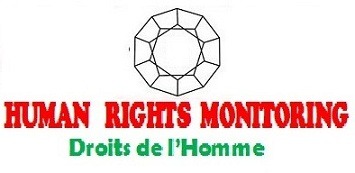
View On WordPress
0 notes
Text
Names generated from female Gaelic and Finnish forenames
Aelinn Aellincer Aigsha Ailaoireeny Ailiav Ailly Aineagan Ainey Ainiana Ainna Ainnoonanno Aireach Airidhethna Airita Airsear Airseosa Airvalmiia Aiserie Aisla Aislaunacha Aisligsh Aisuiganna Aitia Aittu Aitva Alaira Aleel Allach Alleertta Allerja Alvanya Anaidailey Anera Aoirja Arrain Asainta Aservi Asiiney Assattal Assibh Auner Auney Aurane Aured Aureffawnya Auren Aurphy...
Baimeanne Baina Baiveen Ballaha Banial Barry Bebhende Bebhete Bebhiliath Bebigh Bebin Bebina Beibiga Belva Bethna Bethne Beveen Bevielleada Bevsha Bigan Blilmilbhen Blise Boireannag Boonora Boyre Breal Breamacht Breffaoisa Brendane Brinn Briona Britren Bronaneag Cadan Cahja Caibh Caija Caile Cainne Caisli Caitanana Caoifenh Caoiliatu Caoillan Caoin Caoinevara Caoirja Caoiseowany Carla Carmirea Cathlilta Catrionse Cattu Ceach Ceadh Ceamhannie Ceandelle Ceilbh Ceria Cerri Clidhelvi Cliljä Cobhneann Corcadhna Cormabhenan Corna Cuallina Cualvi Cuanneadb Dairsi Danneaghdli Deamag Deany Deara Debhne Debreen Deidagana Delagh Delin Delvi Demmaedanna Dervo Dochragan Dolin Doona Dorcadailvi Dorna Duire Eardaireen Eibreenh Eilie Eiliin Eilineach Eilvi Einna Elaoiren Eleelidelna Eliasan Eligaelja Elikki Eljach Ellian Elmora Elsath Emilsa Emman Eriadbh Erian Ericinairen Eriomhanna Ernag Erraitillia Ertti Erveenna Essatri Essini Eveenna Fiallevi Fiamaegan Fiavara Finach Fiomaleija Fiomhawna Fionsar Floanualla Flona Geeneennia Geenrierna Gernani Goragh Gorlana Grailiadan Grauren Greagh Greaghawnya Grealuirigh Heach Heith Heljatu Helna Henriona Herie Hiarithna Hilfhillide Hineamh Hinni Idhenna Idhlinn Iikkara Iikku Iinna Ilbhe Ilbhliann Ilppa Inneibigser Innia Innuania Isivi Jemeanu Jemie Jemiishelin Jennean Jessa Jessal Jutitlia Juttuomhse Kaara Kaidwen Kaili Kaini Katta Kayleeli Kaylla Keelb Keena Keenganva Keenne Keenoonn Keerial Keeve Keevier Keith Keleen Kennana Kenni Kerja Khonah Kinabh Kinsea Kirdine Kireenrinn Kirkkirkka Kroila Krona Kroona Kroonsea Kylikkielva Kylla Lacht Laingan Laitigeeon Lanacolin Lanna Lannoc Leenna Leentan Liann Liasiona Lidhetaija Ligeenn Ligemmailjä Liian Lilley Linean Linne Loanni Luigshock Luukka Luuttu Lyyley Mabhina Madhbherjo Maelvi Maene Maevi Mainea Mainn Maira Mairedy Mairi Maisen Maisla Maislikkin Maivi Maivier Malvi Manna Maoiseadhna Maoisuomaen Maragaelna Meach Meamha Meana Meani Meentir Merne Merva Merve Mhanna Miimura Miislaurpa Mikkaarjach Milly Milti Minnu Mireeval Mirphy Moirkka Moirvo Moiservo Moivineeva Molikko Molionnea Monabalvi Morahja Moraullin Moread Moreada Morma Mormara Morne Morry Moyran Moyreach Moyreacht Moyreadh Muirshe Mureach Muren Murphna Myfawna Nerja Nialina Niave Nolife Nolla Noosach Oifenna Oonse Orende Orriona Outittara Outtaith Pawna Pirauni Pireach Pirja Proili Prosa Prownain Quinteasa Rabalmach Rahaisagan Readan Reaganain Reana Reevelairid Rhoch Rhock Rhorn Ricine Ridhna Rillaoin Rinagh Rittuovi Roana Roanuan Rowana Rowani Saganno Saife Samury Sanaga Seabain Seanne Searstyn Seassivi Seatrith Seava Shawnya Sheadb Sheas Sheireen Shoch Shock Sibhe Sidhbh Sidhe Sidra Sierja Silbheara Siliall Silin Silinni Siliomhawny Silsaisirja Silvi Sincatta Sinna Sinseona Sintaina Siobin Siona Siosagwinse Sirja Sirshoc Sisohvi Sisuad Siveea Sivelna Slaija Slairita Sliela Slilina Sohviina Sonsarionta Sontea Sorry Suacorry Suomait Suomha Suovi Sydiarsty Syksyksydin Síleassin Síley Taita Tally Talva Tanya Teeng Teenno Tilmiin Toirsidhbh Treag Tridwenna Tuigh Tutta Tyneara Tyydolla Unora Vendan Viine Zaraigan Zarja Zarnaga Zarse
0 notes
Text

Dessins de la semaine 😁 🤣
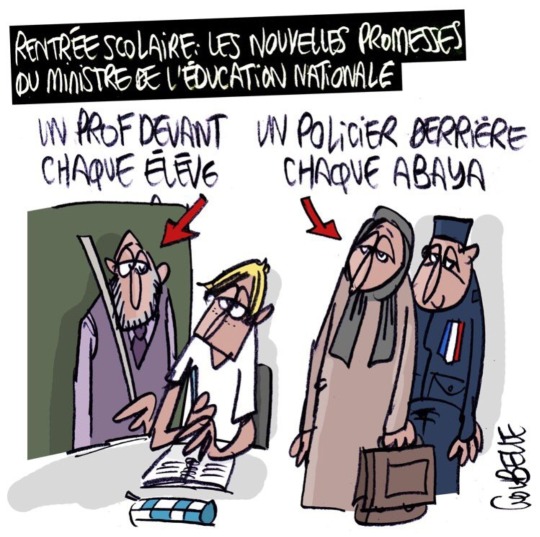
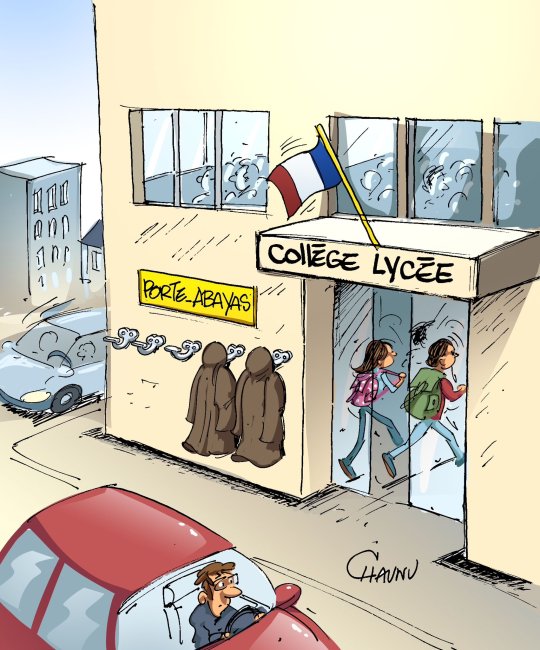

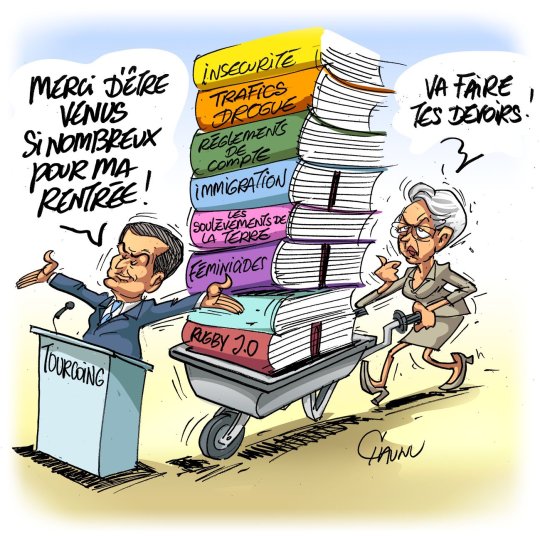
Dessins de presse de Chaunu, Goubelle, Alex, Kak, Sanaga, Soulcié.

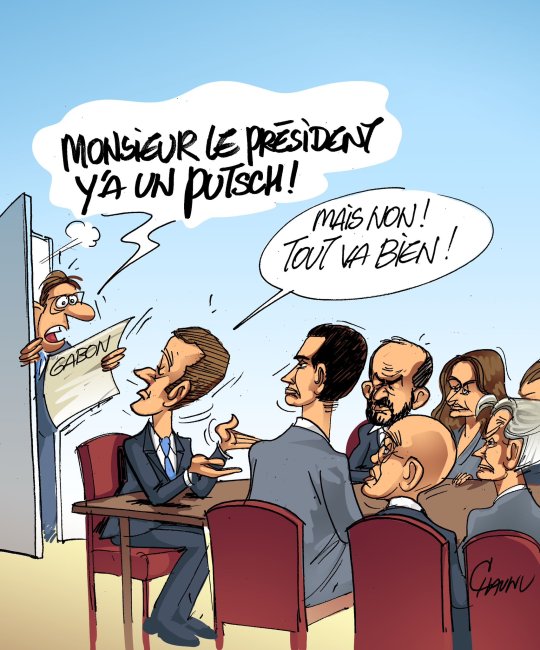

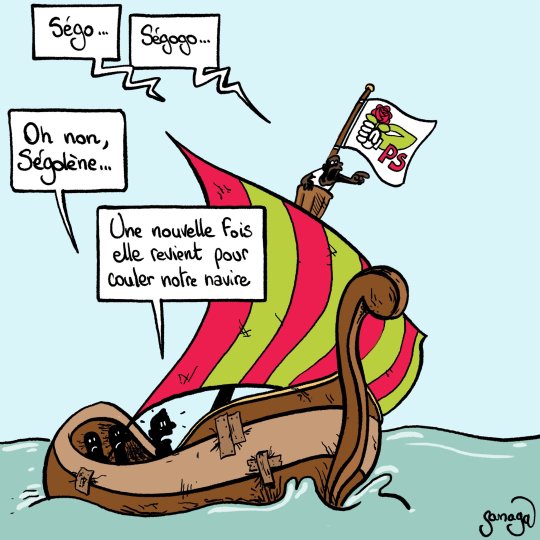
Bel après-midi 👋

#artwork#art et talent#dessin de presse#humour#funny pics#actualité#chaunu#goubelle#kak#sanaga#soulcié#alex#rentrée#belaprèsmidi#fidjie fidjie
34 notes
·
View notes
Text
KAMEROEN Ka_meroena
Die Here toelaat. Latynse
Iamo Ruan.
Laart van Kameroen
Marou.
Land van stomende oerwoude en dorre woestyne
Gar
TSJAD
Benus
Rei Bo
NIGERIE
Adamaoua
Ngaoundere ins Adamaoua-
gebergte
Miere
10000 mm reen-meer as op enige ander plek in Afrika-word jaarliks by die reenmeter op Debundja aan die hange van die Kameroenberg gemeet. Dag ná dag. week na week stort die reen hier neer op 'n sto mende oerwoud waarin daar geen seisoene bestaan nie, en waar selfs die nag kwalik verligting bring van die ondraaglik bedompige van
die ekwatoriale Afrika Maar 'n mens moenie die fout maak om te dink dat die hele Kame roen een groot tropiese reënwoud is nie. Kameroen is 'n taamlik groot land (met sy 475 442 km is dit groter as die Vrystaat en Transvaal saam), en hoewel sy noordpunt minder as 15 noord van die wanaar 10, is 'n aansienlike deel van die binneland, wat aan die onherbergsame Sahara grens, feitlik 'n woestyn. Hier is die gemiddelde jaarlikse reen val 400 mm of minder, en in die vroee deel van die jaar word die ver sengende hitte bowendien vererger deur 'n droë wind uit die Sahara Gelukkig kom die heersende winde uit die suide en suidweste, 'n fit wat daarvoor verantwoordelik is dat daar wel 'n bietjie roen val
Die groot klimaat-uiterstes wat Kameroen ondervind, kan ten dele, toegeskryf word aan sy eienaardige driehoekvorm. (In die noorde strok die land met 'n lang tong tot aan die walle van die Tajad-meer art regs) Die bou en die natuurlike plantbedekking is gevolglik op pale gevarieerd. Die suidelike en sentrale hoogland word heel in die suide begryns deur laaglande met digte tropiese reënwoude, en in die weste deur 'n breé tropiese kusvlakte. Noordwaarts loop die hoog- land uit in betrek hoe bergreekse wat met 'n wye boog van die Kameroenbergreeks naby die kus noordooswaarts strek. Die hoogste spite in die bergreeksen Kameroenberg, in 4070 m hoog en soms selfs met sneeu bedek Hierdie vulkaan se jongste uitbarsting was in 1922 Verder noordooswaarts gaan de Kameroenberge oggin die hauwniagtige Adamaous-gebied en nog verder noord, aan die oors
van die Tajad-meer, 18 'n moerasagtige laangebied Verske groot riviere dreineer die binneland Deur die suidelike hoogland vioel die Sanaga, die Nyong en 'n aantal kleiner riviere, wat almal in die Golf van Biatra uitmond. Die belangrikste rivier in die noorde is die Benue, die grootste takrivier van die Niger, wat noord- waarts ne Nigerie vloel. Hoewel die Sanaga 'n bree riviar is, is hy vari weinig waarde as 'n verkeersweg want vanweë watervalle, stroomver anellings an'n te lae watervlak in die droë seisoen is slegs klein entjies van die rivier bevaarbaar. Dieselfde geld vir die ander riviere
Tibati
Mbam
Bament
Foumban
Bambolo-
gebergle
MIDDE- AFR. REPU- BLIEK
Dengdend Lom
K
A
M anaga
Ro
odel Rey Nkongsamba.
E
Baton
KAMERDENBENG
Nange Eboko
Doume
Sanage
R
DOUALA
YAOUNDE OM Balmayo
Edea
Hyong
Golf
van
Kribio
Baumbe
E
N VOORUITSTREWENDE STAAT
Campo
Kameroen is een van die mees vooruitstrewende state in tropiese Afrika, en sy ekonomie berus hoofsaaklik op die landbou en bosbou in die droë noorde word giers verbou en beeste en bokke aangehou In die suidweste is koffie en piesangs die belangrikste produkte, terwyl
EKWATORIALE GUINEE!
GABOEN
KONGO
PLANTE- EN DIERELEWE
Die gevarieerde omgewingstoestande bring mee dat 'n groot verskeidenheid plante en diere in Kameroen voorkom Die suidelike laagland word bed deur tropiese reenwoude met die tipiese plantegroei van die soort streak die moerasgebiede van die noorde groei riet, rottang en raffiapalms, terwy fugwortelbome (mangroves) aan die kus voorkom. Dieper die binneland in Grondboontjies, mango's, @altnevrugte kakan, kole.
TEKS IN OORLEG MET DR JN STRYN
kakao in die suidelike streek verbou word. Koffie. kakao en hout is die belangrikste uitvoerprodukte. Sedert die ontdekking van olie in Kameroen se Auswaters en bauxiet (aluminiumerts) by Ngaoun- dere in die binnelandt het die mynwese vinnig ge- groel. Tans lewer dit 'n belangrike bydrae tot die and se uitvoer en volksinkome Die meeste van die Iland se krag word by die Edea-hidroelektriese skema in de Sanagarivier opgewek, waar ook 'n aluminiumsmeltery opgerig is
Exonomiese ontwikkeling word vertraag deur 'n gebrek aan 'n goeie verkeersnetwerk. Tog is daar reeds twee spoorlyne voltooi. Die een verbind die hawe van Douala met Nkongsamba, terwyl die ander tot by Ngaoundere in die binneland strek. Die pad- verbindings word eweneens verbeter. Hoewel Douala deur 'n hoofpad verbind word met Ndjamena die hoofstad van die Republiek Tsjad in die noorde is die pad so swak dat dit maklikeris om die van die noordelike streek op die Benuerivier deur Nigerie uit te voer.
Danksy die land se betreklike politieke stabilitet die regering se verstandige ontwikkelingsbeleid. vorder Kameroen ekonomies, en die per capita inkomste van byna R400 per jaar vergelyk gunstig met die van sommige van sy bure.
'N GEMENGDE BEVOLKING
Kameroen het 'n uiters gemengde bevolking, en volgens berekening word die land deur meer as 200 verskillende inboorlingstamme bewoon. Die kus strook en die suidelike woudgebied is die tuiste van Bantoestamme, die getalsterkste etniese groep in die land inde noorde woon in groot verskeidenheid Negerstamme, en in die sentrale gebied is daar stamme met tale wat verwant is aan dié van sowel die Bantoes as die Negers. In die noorde word ook hee wat groepe van Arabiese afkoma aangetref. Die oor spronklike bewoners van die land was waarskynlik pigmee, wat nou siegs nog in verspreide groepies in die suidelike woude voorkom. Daar is tans hoog- stens 10 000 van hierdie interessante inwoners van Midde-Afrika in Kameroen oor.
Vanweë die ondraaglike klimaat het blankes hulle
nooit in groot getalle in Kameroon gevestig nie. Tana
Is daar slegs sowat 12000 blankes, hoofsaaklik
Franso, in die land, uit 'n totale bevolking van sowat 9,6 miljoen.
BEKNOPTE GESKIEDENIS
Die gebied aan die Golf van Biafra is aan die einde
van die 15de eeu deur die Portugese seevaarder
word 'n groot verskeidenheid immergroen bome aangetret, en in die hoër dele kom tropiese graslande voor. In die noorde gaan die land oor danngboswereld
Die dierelewe is byna net so gevarieerd as die plantegroel in die reinwoude inef om gorillas en sjimpansees, asook duisende reptiele
Inboorlinghulte met in eienaardige vorm in die binneland
INVOER Brandstof Voertuie
UITVOER Aluminium Katoen Koffie Rubber Palmolie Petroleum Hout
Fernando Po ontdek, wat die grootste inham aan die kus die Rio dos Cameroes (Rivier van die Garnale) genoem hat vandaar die naam Kameroen. In die- 17de en die 18de eeu is verskeie handelsposte aan- die kus gestig, maar sonder veel welstae. Die kus- stamme van die Douala-gebied het geen ontdekkers toegelaat om die binneland te besoek nie en het as tussengangers fussen die blanke handelaars en die binnelandse stamme opgetree 'n Aantal van die hoofmanno aan die kus het trouens skatryk geword uit die handel in rubber, ivoor en slawe
Teen die einde van die 18de eeu was die handel hoofsaaklik in Britse hande, en in 1835 het die koning van Bimbia 'n strook land aan die kus aar Brittanje afgestaan. In 1884 het die Duitse Afrika- reisiger Gustav Nachtigal, wat van 1869 tot 1885 ver- skeie ontdekkingstogte na Midde-Afrika onderneem het (sien bl 2551), 'n verdrag met 'n aantal stam- hoofde gesluit, waardeur Kameroen 'n Duitse
kolonie geword het. Nieteenstaande aanvanklike Britse en Franse teenkanting is die Duitse aanspraak op die gebied later erken.
Tydens die Eerste Wêreldoorlog het Franse en Britse troepe die Duitse kolanie beset, en na die oor- log is die gebied verdeel in 'n groot Franse en 'n veel kleiner Britse mandaatgebied
Op 7 Januarie 1960 het die Franse Kameroon 'n onafhanklike republiek geword onder die leiding van pres. Ahmadou Ahidjo. Op 1 Oktober 1961 het die Britse Kameroen eweneens onafhanklikheid ver kry. Daar is toe deur middel van 'n volkstemming besluit om die suidelike deel van dié gebied by die voormalige Franse Kameroen en die noordelike deel by Nigerie in te lyf (sien bl. 2308) Pres. Ahidjo, wat outoritér geregeer het, het in 1982 bedank en is op- gevolg deur die eerste minister. Paul Biya, wat in 1984 herkies is. Die ontwikkelingspell van die be- volking is egter steeds baie laag, en kwalik 15 persent van die bevolking kan lees en skryf. Frans en Engels is die amptelike tale
Die enigste belangrike stede is Douala (950000 inwoners) aan die kus en Yaounde (660000 inwo- ners), die hoofstad, wat in die binneland le. Douala, die belangrikste hawe van Kameroen en een van die grootstes aan die hele Wes-Afrikaanse kus, het ook 'n moderne internasionale lughawe
TEKS IN OORLEG MET P WESTERHUYSEN
en insekte. Aan die woudrande en op die grasvlaktes hou olitante, wildsbokke, buffels, kameelperde en swartrenosters. In die riviere kam seokoaie en kro- kodille voor, terwyl 'n groot verskeidenheid tropiese volls in alle dele van Kamerben aangetref word.
0 notes
Text
Sanaga Maritime: Creeping electric cable electrocutes man to death
http://dlvr.it/SppZvW
0 notes
Text
Sanaga Maritime: Creeping electric cable electrocutes man to death
http://dlvr.it/SppZ52
0 notes
Text
Le peuple Beti du Cameroun
Le peuple Beti est un groupe ethnique du Cameroun, présent principalement dans les régions du Centre, de l’Est et du Sud. Ils sont connus pour leur culture riche et leur langue commune, le beti.
L’histoire des Beti remonte à plusieurs siècles, et leur migration depuis la région du lac Tchad vers la région de la Sanaga est largement documentée. Les Beti sont une société matrilinéaire, où la…

View On WordPress
0 notes
Text
Humour...grinçant : les vignettes vachardes de l'actu de la semaine
Le bras d’honneur est à la mode en Macronie ! Michel Debré fondateur de la constitution de 58 et instigateur du 49.3 disait : le 49.3 utilisé à tout instant, serait dangereux pour le régime. Borne l’a utilisé 11 fois en quelques mois !
Enfile la combi et vas-y mon p’tit Zeus ! Il te faudra bien 20 ans pour tout nettoyer !
Dessin de Sanaga- là on est tous en colère !
Chouette on l’attend !
Le…

View On WordPress
0 notes
Text
Cameroun : Gaston Eloundou Essomba au PAEPYS financé à 75,1% par EXIM BANK
Le Projet d’Alimentation en Eau Potable de la ville de Yaoundé et ses environs à partir du fleuve Sanaga (PAEPYS) avancent normalement
Le Ministre camerounais de l’Eau et de l’Energie était à Emana Batchenga le 11 janvier 2022, où l’entreprise SINOMACH réalise les travaux (Image de Une). Le Projet d’Alimentation en Eau Potable de la ville de Yaoundé et ses environs à partir du fleuve Sanaga (PAEPYS) avancent normalement. C’est le constat fait par le Ministre Gaston Eloundou Essomba. Le cocontractant SINOMACH affiche un…

View On WordPress
0 notes
